CAA News Today
Exhibitions Curated by CAA Members
posted by CAA — April 06, 2017
Check out details on recent shows organized by CAA members who are also curators.
Exhibitions Curated by CAA Members is published every two months: in February, April, June, August, October, and December. To learn more about submitting a listing, please follow the instructions on the main Member News page.
April 2017
Jacki Apple. Yoshio Ikezaki: Elements 1991–2016. Alyce de Roulet Williamson Gallery, Art Center College of Design, Pasadena, California, March 16–May 28, 2017.
Anna Rogulina. A Vibrant Field: Nature and Landscape in Soviet Nonconformist Art, 1970s–1980s. Jane Voorhees Zimmerli Art Museum, Rutgers University, New Brunswick, New Jersey, March 4–July 30, 2017.
Jane A. Sharp. “Thinking Pictures”: Moscow Conceptual Art in the Dodge Collection. Jane Voorhees Zimmerli Art Museum, Rutgers University, New Brunswick, New Jersey, September 6–December 31, 2016.
Julie J. Thomson. Begin to See: The Photographers of Black Mountain College. Black Mountain College Museum and Arts Center, Asheville, North Carolina, January 20–May 20, 2017.
Michaelann Tostanoski and Leila Daw. Social Fabric / Moral Fiber. Gallery West, Suffolk County Community College, Selden, New York, February 14–March 30, 2017.
Gloria Williams. Maven of Modernism: Galka Scheyer in California. Norton Simon Museum, Pasadena, California, April 7–September 25, 2017.
Books Published by CAA Members
posted by CAA — April 04, 2017
Publishing a book is a major milestone for artists and scholars—browse a list of recent titles below.
Books Published by CAA Members appears every two months: in February, April, June, August, October, and December. To learn more about submitting a listing, please follow the instructions on the main Member News page.
April 2017
Flora Brooke Anthony. Foreigners in Ancient Egypt: Theban Tomb Paintings from the Early Eighteenth Dynasty (1550–1372 BC) (New York: Bloomsbury Academic, 2017).
Jacki Apple. Yoshio Ikezaki: Elements 1991–2016 (Pasadena, CA: Art Center College of Design, 2017).
Caroline Boyle-Turner. Paul Gauguin and the Marquesas: Paradise Found? (Pont-Aven, France: Éditions Vagamundo, 2016).
Shira Brisman. Albrecht Dürer and the Epistolary Mode of Address (Chicago: University of Chicago Press, 2016).
John Chaich and Todd Oldham. Queer Threads: Crafting Identity and Community (New York: AMMO Books, 2017).
Christine Filippone. Science, Technology, and Utopias: Women Artists and Cold War America (New York: Routledge, 2017).
Leonard Folgarait. Painting 1909: Pablo Picasso, Gertrude Stein, Henri Bergson, Comics, Albert Einstein, and Anarchy (New Haven: Yale University Press, 2017).
Elisabeth A. Fraser. Mediterranean Encounters: Artists between Europe and the Ottoman Empire, 1774–1839 (University Park: Pennsylvania State University Press, 2017).
Francesca Granata, Experimental Fashion: Performance Art, Carnival, and the Grotesque Body (London: I. B. Tauris, 2017).
Ray Hernández-Durán. The Academy of San Carlos and Mexican Art History: Politics, History, and Art in Nineteenth-Century Mexico (New York: Routledge, 2016).
Namiko Kunimoto. The Stakes of Exposure: Anxious Bodies in Postwar Japanese Art (Minneapolis: University of Minnesota Press, 2017).
Catha Paquette. At the Crossroads: Diego Rivera and His Patrons at MoMA, Rockefeller Center, and the Palace of Fine Arts (Austin: University of Texas Press, 2017).
Elizabeth Prettejohn and Peter Trippi, eds. Lawrence Alma-Tadema: At Home in Antiquity (New York: Prestel, 2016).
Sarahh E. M. Scher and Billie J. A. Follensbee, eds. Dressing the Part: Power Dress, Gender, and Representation in the Pre-Columbian Americas (Gainesville: University Press of Florida, 2017).
Jane A. Sharp, ed. Thinking Pictures: The Visual Field of Moscow Conceptualism (New Brunswick, NJ: Zimmerli Art Museum, 2016).
Tanya Sheehan, ed. Grove Art Guide to Photography (New York: Oxford University Press, 2017).
Victoria Surliuga. Ezio Gribaudo: The Man in the Middle of Modernism (New York: Glitterati, 2016).
Andrés Mario Zervigón. Photography and Germany (London: Reaktion Books, 2017).
Solo Exhibitions by Artist Members
posted by CAA — April 03, 2017
See when and where CAA members are exhibiting their art, and view images of their work.
Solo Exhibitions by Artist Members is published every two months: in February, April, June, August, October, and December. To learn more about submitting a listing, please follow the instructions on the main Member News page.
April 2017
Mid-Atlantic
Jaz Graf. Paul Robeson Galleries, Engelhard Hall, Rutgers University, Newark, New Jersey, September 6, 2016–July 31, 2017, Articulations. Prints, handmade paper, and mixed-media drawings.
Midwest
Ken Gonzales-Day. Minnesota Museum of American Art, Saint Paul, Minnesota, January 19–April 16, 2017. Ken Gonzales-Day: Shadowlands.
Northeast
Pat Adams. Bennington Museum, Bennington, Vermont, April 1–June 18, 2017. Gatherum of Quiddities: Paintings by Pat Adams. Painting.
Lucinda Bliss. Common Street Arts, Waterville, Maine, January 11–February 25, 2017. Tracking the Border: An Interrogation of Political, Natural, and Interior Borders.
Dear Volunteers (Tra Bouscaren and John Schlesinger). AC Institute, New York, March 7–31, 2017. Dear Volunteers. Neon, Styrofoam, painted photographs cast in resin, lab clamps, rebar, and interactive video.
New in caa.reviews
posted by CAA — March 17, 2017
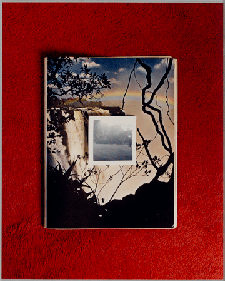 Vanessa Rocco visits Photo-Poetics: An Anthology at the Solomon R. Guggenheim Museum. The “exhibition of ten contemporary photographers” is grounded in the “passionate advocacy of investing time in looking closely at photographs.” As a whole, the works on display were “striking,” though “some individuals and groups were more compelling than others.” Read the full review at caa.reviews.
Vanessa Rocco visits Photo-Poetics: An Anthology at the Solomon R. Guggenheim Museum. The “exhibition of ten contemporary photographers” is grounded in the “passionate advocacy of investing time in looking closely at photographs.” As a whole, the works on display were “striking,” though “some individuals and groups were more compelling than others.” Read the full review at caa.reviews.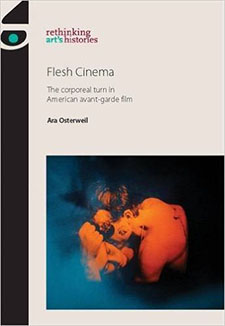 Nicholas C. Morgan reviews the book Flesh Cinema: The Corporeal Turn in American Avant-Garde Film by Ara Osterweil. In “one of the most compelling studies of the body’s relation to avant-garde art and film,” the author “articulate[s] ‘flesh cinema’ as a coherent, if shifting, category of postwar film” and insists “on the impossibility of divorcing ‘flesh cinema’ from the flesh of the world.” Read the full review at caa.reviews.
Nicholas C. Morgan reviews the book Flesh Cinema: The Corporeal Turn in American Avant-Garde Film by Ara Osterweil. In “one of the most compelling studies of the body’s relation to avant-garde art and film,” the author “articulate[s] ‘flesh cinema’ as a coherent, if shifting, category of postwar film” and insists “on the impossibility of divorcing ‘flesh cinema’ from the flesh of the world.” Read the full review at caa.reviews.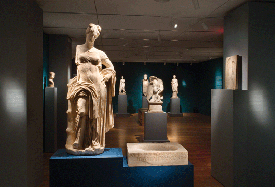 Anne Hrychuck Kontokosta discusses Gods and Mortals at Olympus: Ancient Dion, City of Zeus at the Onassis Cultural Center. The exhibition “delighted viewers with a carefully curated collection” of objects” and “focused on archeological research,” facilitating “a comprehensive and contextualized understanding of the ancient city of Dion.” Read the full review at caa.reviews.
Anne Hrychuck Kontokosta discusses Gods and Mortals at Olympus: Ancient Dion, City of Zeus at the Onassis Cultural Center. The exhibition “delighted viewers with a carefully curated collection” of objects” and “focused on archeological research,” facilitating “a comprehensive and contextualized understanding of the ancient city of Dion.” Read the full review at caa.reviews. Gülru Çakmak reads Gustave Moreau: History Painting, Spirituality, and Symbolism by Peter Cooke. The author traces the artist’s “lifelong endeavor to revitalize le grand art in France … and to combat the endemic materialism of the age,” showing how “the antinaturalist and antidemocratic aesthetic” of Moreau’s work “countered the dominant naturalist paradigm in French art.” Read the full review at caa.reviews.
Gülru Çakmak reads Gustave Moreau: History Painting, Spirituality, and Symbolism by Peter Cooke. The author traces the artist’s “lifelong endeavor to revitalize le grand art in France … and to combat the endemic materialism of the age,” showing how “the antinaturalist and antidemocratic aesthetic” of Moreau’s work “countered the dominant naturalist paradigm in French art.” Read the full review at caa.reviews.Serve on a CAA Award Jury
posted by tiffany — March 16, 2017
CAA invites nominations and self-nominations for individuals to serve on seven of the twelve juries for the annual Awards for Distinction for three years (2017–20). Terms begin in May 2017; award years are 2018–20. CAA’s twelve awards honor artists, art historians, authors, curators, critics, and teachers whose accomplishments transcend their individual disciplines and contribute to the profession as a whole and to the world at large.
Candidates must possess expertise appropriate to the jury’s work and be current CAA members. They should not hold a position on a CAA committee or editorial board beyond May 31, 2017. CAA’s president and vice president for committees appoint jury members for service.
Jury vacancies for spring 2017:
- Alfred H. Barr Jr. Award: two members
- Artist Award for a Distinguished Body of Work: two members
- CAA/AIC Award for Distinction in Scholarship and Conservation: one member
- Distinguished Feminist Award: two members
- Distinguished Lifetime Achievement Award for Writing on Art: one member
- Distinguished Teaching of Art History Award: one member
- Frank Jewett Mather Award: two members
Nominations and self-nominations should include a brief statement (no more than 150 words) outlining the individual’s qualifications and experience and a CV (an abbreviated CV no more than two pages, may be submitted). Please send all materials by email to Katie Apsey, CAA manager of programs; submissions must be sent as Microsoft Word or Adobe PDF attachments. For questions about jury service and responsibilities, contact Tiffany Dugan, CAA director of programs.
Deadline Extended: May 31, 2017.
Statement on the US President’s FY2018 Budget Proposal
posted by CAA — March 16, 2017
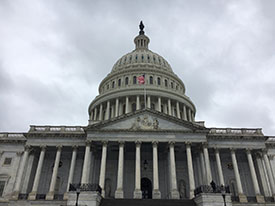 Today the US President released his proposal for 2018 federal budget – it envisions transferring additional billions of dollars to the Department of Defense, Veterans Affairs, and Homeland Security from many important domestic programs such as the Environmental Protection Agency, education, and legal services. As expected, the budget also calls for the complete elimination of the Corporation for Public Broadcasting, National Endowment for the Arts, National Endowment for the Humanities, and 16 other federal agencies. CAA was one of the first national organizations to speak against these cuts.
Today the US President released his proposal for 2018 federal budget – it envisions transferring additional billions of dollars to the Department of Defense, Veterans Affairs, and Homeland Security from many important domestic programs such as the Environmental Protection Agency, education, and legal services. As expected, the budget also calls for the complete elimination of the Corporation for Public Broadcasting, National Endowment for the Arts, National Endowment for the Humanities, and 16 other federal agencies. CAA was one of the first national organizations to speak against these cuts.
Read the statement against these cuts that CAA released on January 23, 2017.
As educators, art historians, artists, curators, museum directors, designers, scholars, and other members of the visual arts community we must act to defend the role of arts and humanities in our society. The budget process is long and ultimately controlled by the US House and Senate. Earlier this week, CAA traveled to Washington for Humanities Advocacy Day to meet with many congressional offices to discuss the importance of continued NEA and NEH funding. We will return again next week to do the same for Arts Advocacy Day.
In addition, CAA assembled an Arts and Humanities Advocacy Toolkit with information on how to contact your representatives in Congress to voice your support for the NEA and NEH and the many quality programs they fund. Call their offices. Email them. Attend Town Halls. You can learn how these agencies support activities in your area here: funded by the NEA and funded by the NEH. Be sure to let your representatives know of the impact of the arts and humanities in your districts. Spread the word to your colleagues and friends.
Despite the White House’s opposition to continued funding for the NEA and NEH, there is sufficient reason to believe that many members of the US House and Senate will support a budget that includes continued funding for these agencies. I ask our members to join in the effort to make sure all members of Congress knows the importance of the work done by these agencies.
![]()
Hunter O’Hanian
Executive Director
Chief Executive Officer
News from the Art and Academic Worlds
posted by Christopher Howard — March 15, 2017
Each week CAA News summarizes eight articles, published around the web, that CAA members may find interesting and useful in their professional and creative lives.
Can .art Domain Give the Art Business an Online Boost?
London’s Institute of Contemporary Art adopted the new .art suffix last week, a sign that the art and culture business may be coming to terms with its future in the digital realm. The ICA ditched its fusty ica.org.uk domain for the streamlined and descriptive ica.art, and the move may soon be followed at other prestigious art institutions around the world. (Read more from the Guardian.)
BHQFU on How to Run a Free Art School with the “Worst” Business Model
If there’s one thing that sets US education apart from education in other nations, it’s student debt. For art students with vague graduate degrees that don’t offer much job security, the cost of tuition has left many of them worse off after graduating than they were before becoming a student. What can be done? (Read more from Artspace Magazine.)
What Happens to Whitney Biennial Curators after the Show’s Over?
Inclusion in the Whitney Biennial—the influential and sometimes controversial snapshot of contemporary American art that takes place every two years—has launched or resuscitated many an artist’s career. But those tapped to do the selecting have experienced their own professional transformation, as this year’s organizers Christopher Y. Lew and Mia Locks may well discover. (Read more from Artsy Editorial.)
Trigger Warning: Academic Standards Apply
“I don’t like this whole idea of academic standards. Ever since I was in grade school, they’ve made me feel pressured and stressed out. I think academic standards are bullying. Whenever I deal with them, they bring back all these old bad memories. It’s like PTSD or something.” So declared a student from one of my courses at California State University, Fresno. (Read more from Inside Higher Ed.)
New Travel Ban Still Sows Chaos and Confusion
A long-anticipated executive order restricting travelers from a half-dozen predominantly Muslim countries is likely to bring little certainty to American college campuses. The new order imposes a ninety-day ban on issuance of new visas, including student visas, to citizens of Iran, Libya, Somalia, Sudan, Syria, and Yemen. (Read more from the Chronicle of Higher Education.)
Museums Chart a Response to Political Upheaval
As President-elect Donald J. Trump’s Inauguration Day approached, hundreds of artists, critics, and others asked American museums, galleries, and other institutions to close their doors in protest. They wanted museums to show that they are “places where resistant forms of thinking, seeing, feeling, and acting can be produced,” the organizers wrote in a petition for a J20 Art Strike. (Read more from the New York Times.)
When the Private Sector Funds the Arts
I recently wrote a piece defending the NEA, a grant-making organization that is somehow such a drag on the economy that it is now on the chopping block for the federal 2017 budget. This move makes perfect sense for Donald Trump the businessman, according to GOP enablers, because if the arts and so-called free expression are so worthy, the private sector will step in and fund them. (Read more from the Millions.)
US Embassy Art Scheme Should Survive Trump
The Trump administration is considering cutting federal funding for the arts, among other spending programs, to reduce domestic spending. However, one US cultural initiative appears to be secure—the State Department’s Art in Embassies program, which places works by US artists in embassies and ambassadorial homes around the world. (Read more from the Art Newspaper.)
Thanks to 2017 Career Services Mentors and Workshop Leaders
posted by CAA — March 14, 2017
CAA extends a warm thank-you to all of the artists, scholars, curators, critics, educators, and other visual-arts professionals who served as Career Services mentors during the 2017 Annual Conference. Your knowledge and expertise helped to enrich the Artists’ Portfolio Review, Career Development Mentoring, and Mock Interviews. We also appreciate the efforts of the members who created and led Professional Development Workshops and Brown Bag Sessions based on members’ needs.
Artist’s Portfolio Review
Susan Canning, Sculpture; Jill Conner, Artists Studios; Carrie Ida Edinger, Independent Artist; Nancy Hart, Artist/263 Gallery; Richard Heipp, University of Florida; David Howarth, Zayed University; Paul Hunter, Artist/Painter; Jason Lahr, University of Notre Dame; Suzanne Lemakis, Citibank, retired; Sharon Lippman, Art Without Walls; Craig Lloyd, Mount St. Joseph University; Yelena McLane, Florida State University; Dinah Ryan, Principia College; Paul Bernard Ryan, Mary Baldwin University, Emeritus; and Greg Shelnutt, Clemson University.
Career Development Mentoring
Susan Altman, Middlesex County College; Michael Aurbach, Vanderbilt University, Emeritus; Roann Barris, Radford University; Colin Blakely, University of Arizona; Leda Cempellin, South Dakota State University; Crista Cloutier, The Working Artist; Rebecca J. DeRoo, Rochester Institute of Technology; James Farmer, Virginia Commonwealth University; Reni Gower, Virginia Commonwealth University; Antoniette (Toni) Guglielmo, Getty Leadership Institute; Dennis Ichiyama, Purdue University; Zach Kaiser, Michigan State University; Ann B. Kim, University East; Carol Herselle Krinsky, New York University; Emmanuel Lemakis, CAA, retired; Jeffery Cote de Luna, Dominican University; Heather McPherson, University of Alabama, Birmingham; Liliana Milkova, Oberlin College; Mark O’Grady, Pratt Institute; Doralynn Pines, CAA; Thomas Post, Ferris State University; Heather Snyder Quinn, DePaul University; Jack Risley, University of Texas at Austin; Andrew Svedlow, University of Northern Colorado; Joe A. Thomas, Kennesaw State University; Ann Tsubota, Raritan Valley Community College; and Barbara Yontz, St. Thomas Aquinas College.
Mock Interview Sessions
Megan Koza Mitchell (Student and Emerging Professionals Committee Chair), Prospect New Orleans; Amanda Wainwright (Student and Emerging Professionals Committee), University of South Carolina; Tamryn Mcdermott, Temple University; Annie Storr, Brandeis University; Lauren Puzier, Sotheby’s; Abbey Hepner, University of Colorado; Rachel Kreiter, Spelman College; Nathan Manuel (Student and Emerging Professionals Committee); Lauren O’Neal, Lamont Gallery, Phillips Exeter Academy; DeWitt Godfrey, Colgate University; Dennis Ichiyama, Purdue University; Rachel Stephens, University of Alabama; Matt King, VCU School of the Arts; Carol Garmon, University of Mary, Washington; Craig Lloyd, Mount St. Joseph University; Maile S. Hutterer, University of Oregon; Mark O’Grady, Pratt Institute; Thomas Post, Kendall College of Art and Design; Greg Shelnutt, Clemson University; Maria Ann Conelli, Brooklyn College, City University of New York; Rebekah Beaulieu, Bowdoin College Museum of Art ; David LaPalombara, Ohio University; Arthur Blake Pierce, Valdosta State University; Michael Lobel, Hunter College; Susan Altman, Middlesex County College; David Howarth, Zayed University; and Colin Blakely, University of Arizona.
Brown Bag Lunches and Sessions
Megan Koza Mitchell (Student and Emerging Professionals Committee Chair), Prospect New Orleans; Amanda Wainwright (Student and Emerging Professionals Committee), University of South Carolina; Tamryn Mcdermott, Temple University; Annie Storr, Brandeis University; Lauren Puzier, Sotheby’s; Abbey Hepner, University of Colorado; Rachel Kreiter, Spelman College; Nathan Manuel, SEPC; Andrea Kirsch, Rutgers University; and Mattie M. Schloetzer, National Gallery of Art.
Professional Development Workshops
Maria Michails, Rensselaer Polytechnic Institute; Susana Sevilla Aho, Modern Language Association; Susan Altman, Middlesex County College; Michael Aurbach, Vanderbilt University, Emeritus; Emily Pugh, Getty Research Institute; Elizabeth Buhe, Institute of Fine Arts, New York University; Petra ten–Doesschate Chu, Seton Hall University; Kate Kramer, University of Pennsylvania; Shannon Connelly, Lebanese American University; Craig Dietrich, The Claremont Colleges; Jon Ippolito, University of Maine; John Bell, Dartmouth College; Molly Fox, Indiana University; Rebekah Beaulieu, Bowdoin College Museum of Art; Deborah Lutz, Pamela Lawton, Annie Leist, and Emilie Gossiaux, all from the Metropolitan Museum of Art; Alexa Sand, Utah State University; Sara Orel, Truman State University; Jenn Karson, University of Vermont FabLab; Martha Schwendener, New York Times/New York University; Jack Henrie Fisher, University of Illinois, Chicago; and Alan Smart, University of Illinois, Chicago.
Learning from Experience: Fair Use in Practice
posted by Janet Landay, Program Manager, Fair Use Initiative — March 14, 2017
We are eager to learn how individual CAA members are relying on fair use. Please take the following survey to let us know if, how, and to what extent you rely on fair use! Link here.
At last month’s Annual Conference, CAA’s Committee on Intellectual Property (CIP) organized “Learning from Experience: Fair Use in Practice,” a panel addressing fair use and how reliance on this aspect of copyright law has increased since CAA published its Code of Best Practices in Fair Use for the Visual Arts two years ago. The CIP session featured leading visual arts professionals in four areas: the academic art library, publishing, art-making, and artist-endowed foundations, each of whom described the importance of fair use in her work. The session, which was attended by more than ninety conference-goers, was led by CIP’s new chair, Anne Collins Goodyear, co-director of the Bowdoin College Museum of Art, and CAA president emerita, during whose tenure CAA undertook its fair use project, which culminated in the publication of the Code.
The panel opened with a brief overview of CAA’s fair use initiative by Goodyear, and then offered compelling examples of the Code’s application. Carole Ann Fabian, the Director of the Avery Architectural and Fine Arts Library at Columbia University reported that Columbia advances the principal of open access policy where possible, and that Avery librarians draw upon three fair use codes when advising library users about quoting from or reproducing copyrighted materials: that developed by the Association of Research Libraries (2012), CAA’s Code of Best Practices (2015), and the Association of Art Museum Directors (AAMD) Guidelines (2016). The shared norms of the CAA and AAMD codes, both of which champion a liberal assertion of fair use, provide particularly helpful guidance on fair use applications related to copyrighted images. Avery is often the first point of contact for students and faculty who have questions about these issues, and as a collecting organization, is also a provider of primary content (and their digital surrogates) to scholars worldwide. Fabian noted that the work librarians perform educating users about copyrights and the doctrine of fair use is ongoing with each year’s influx of new students and faculty. Having a concise resource like CAA’s Code, makes it infinitely easier to introduce library users to this essential feature of American copyright law.
Victoria Hindley, Associate Acquisitions Editor, MIT Press, reported that discussions about fair use at last year’s CAA Annual Conference motivated her to work with her colleagues at MIT Press to pursue a fair use initiative of their own. With support from Executive Editor Roger Conover, Press Director Amy Brand, legal counsel, and others, Hindley helped to define a progressive position in support of responsible fair use. “One of our primary goals,” she said, “was to figure out how to reduce the burden of clearing permissions placed on the author.” The resulting proposal, which is undergoing final Institute approval, is a robust document that most notably, as she explained: “would no longer require authors to indemnify the press when they have made a reasonable good faith determination of fair use.” MIT Press has developed proposed new contract language in support of this position; and, to further empower authors, the Press has crafted permissions guidelines that take advantage of the CAA Code and also refer authors to it. “The CAA Code of Best Practices has proven to be an invaluable guide for us as we’ve held these discussions and made decisions about our own guidelines,” noted Hindley. The new policy pending adoption at MIT Press would provide protections similar to those that CAA grants contributors to its publications.
The third speaker was the distinguished artist Martha Rosler, who received a Lifetime Achievement Award during the conference from the Women’s Caucus for Art. Rosler has for decades incorporated into her work images circulating in what she has called the public sphere of mass media, including newspapers, magazines, and television, without stopping to consider copyright. While showing examples of her work, Rosler described the importance of processes like hers, which, she said, for many artists “constitute an essential form of critique.” Although Rosler’s practice predates the publication of CAA’s Code of Best Practices, she acknowledged that the Code serves to clarify the principles on which such a practice is based. She also noted that the Code has the potential to offer support and encouragement to other artists who might otherwise shy away from the legitimate use of copyrighted material in their work, for fear of adverse consequences. She also observed, with regret, that many artists, particularly those working in video, have deliberately abandoned or failed to undertake projects involving appropriation precisely because the legal departments of broadcast entities bar the airing of such works, out of fear of reprisal for purported infringements.
Francine Snyder, Director of Archives and Scholarship at the Robert Rauschenberg Foundation, was the fourth speaker in the CIP session. She talked about the positive effect on the Foundation of a proactive fair use policy in the year since it was introduced. The main goal of the policy has been to foster scholarship about Rauschenberg, disseminate knowledge, and enhance educational initiatives. In this regard, Snyder reported, the policy has proven a great success, generating more scholarship and innovative projects. Among the outcomes to which she referred is an online gallery for children that includes images of Rauschenberg’s work. Snyder indicated that one of the most important values of the Foundation’s public turn to fair use has been to reduce anxiety on the part of those who want to reproduce the artist’s work for creative and scholarly purposes. Snyder mentioned that the fair use policy does not apply to commercial uses, for which the Foundation relies on licensing through VAGA. By way of conclusion, she explained that the Foundation is committed to an open dialogue as interpretations of fair use continue to evolve, as seen in the multiple applications of CAA’s Code of Best Practices.
Following the formal presentations, Jeffrey P. Cunard, CAA’s counsel, and Co-Chair of its Fair Use Task Force, moderated a discussion with the speakers and audience. Cunard noted the importance of the Rauschenberg Foundation’s turn to the doctrine of Fair Use in making work by Rauschenberg available for scholarly and creative purposes, and the relationship between fair use and an open approach to licensing images. He also clarified, in conversation with Rosler, that copyright holders had not objected to her pioneering work, which may not have been surprising, given the transformative nature of her use of appropriated material.
The talks by each of the speakers on this panel, along with the great interest expressed by the audience, point to increased awareness of the application of fair use since CAA published the Code of Best Practices two years ago. While detailing the many ways in which fair use is benefitting scholarship and creative practice, the session also makes clear the need for ongoing education about the Code, and the importance of publicizing and encouraging its use. We invite further examples of fair use in action, and any suggestions for the continued dissemination of the Code and the guidance it provides.
Meiss Call for Jurors 2017
posted by CAA — March 13, 2017
CAA seeks nominations and self-nominations for one individual to serve on the Millard Meiss Publication Fund Jury for a four-year term, July 1, 2017–June 30, 2021. Candidates must be actively publishing scholars with demonstrated seniority and achievement; institutional affiliation is not required.
The Meiss jury awards subsidies to support the publication of book-length scholarly manuscripts in the history of art and related subjects. Members review manuscripts and grant applications twice a year and meet in New York in the spring and fall to select the awardees. CAA reimburses jury members for travel and lodging expenses in accordance with its travel policy. Members volunteer their services to CAA without compensation.
Candidates must be CAA members and should not currently serve on another CAA editorial board or committee. Jury members may not themselves apply for a grant in this program during their term of service. Nominators should ascertain their nominee’s willingness to serve before submitting a name; self-nominations are also welcome. Please send a letter describing your interest in and qualifications for appointment, a CV, and contact information to: Millard Meiss Publication Fund Jury, College Art Association, 50 Broadway, 21st Floor, New York, NY 10004; or send all materials as email attachments to Deidre Thompson, CAA publications assistant, dthompson@collgeart.org. Deadline: April 21, 2016.




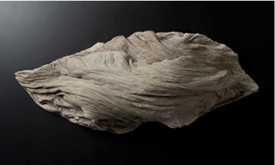 Yoshio Ikezaki, The Earth Breathes–Mind Landscape no.12, 2008 (artwork © Yoshio Ikezaki)
Yoshio Ikezaki, The Earth Breathes–Mind Landscape no.12, 2008 (artwork © Yoshio Ikezaki)
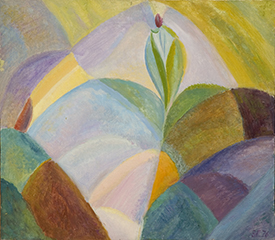 Elena Gritsenko, Landscape, 1976, oil on canvas. Norton and Nancy Dodge Collection of Nonconformist Art from the Soviet Union (photograph by Jack Abraham)
Elena Gritsenko, Landscape, 1976, oil on canvas. Norton and Nancy Dodge Collection of Nonconformist Art from the Soviet Union (photograph by Jack Abraham)

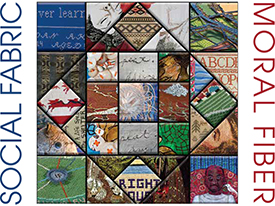 Invitation card for Social Fabric / Moral Fiber
Invitation card for Social Fabric / Moral Fiber
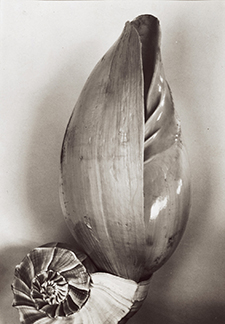 Edward Weston, Two Shells, 1927, gelatin-silver print, Norton Simon Museum, Blue Four Galka Scheyer Collection, PH.1953.609b
Edward Weston, Two Shells, 1927, gelatin-silver print, Norton Simon Museum, Blue Four Galka Scheyer Collection, PH.1953.609b
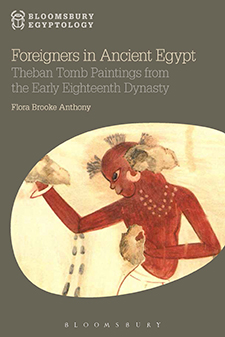

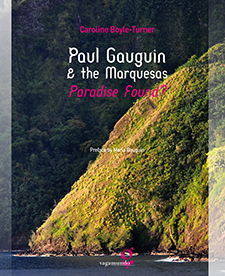

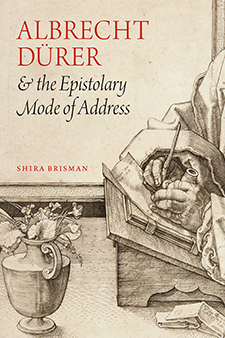

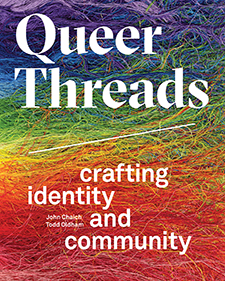

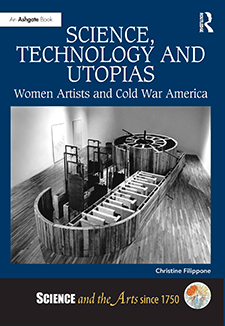

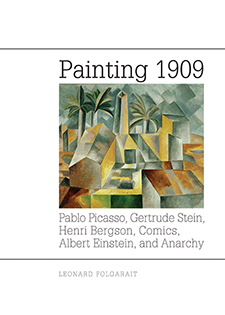

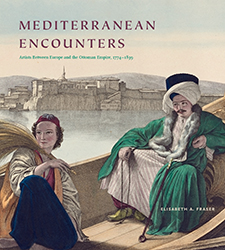

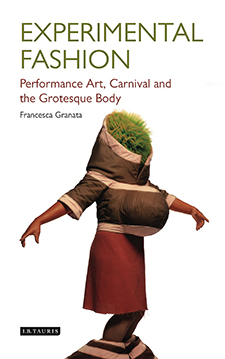

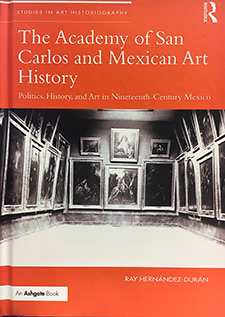

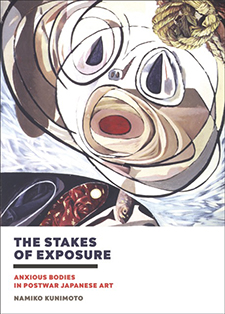

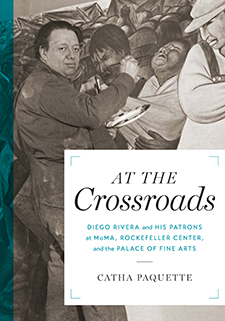

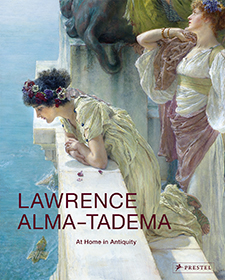

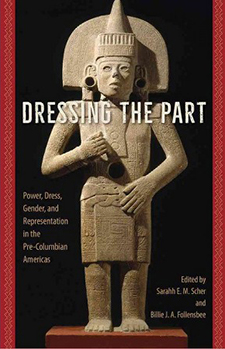

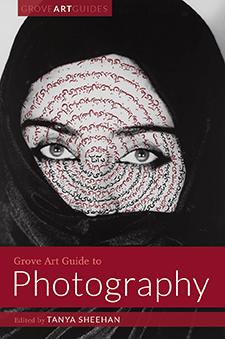



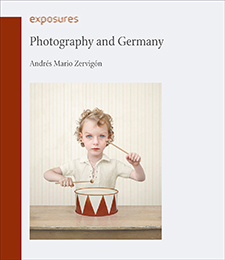

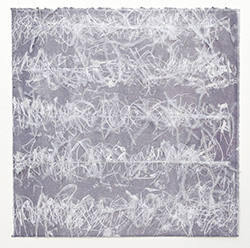 Jaz Graf, Traces of Absence (violet), 2014, monotype, faux feather plumes, pencil, and thread on paper, 15 x 15 in. (artwork © Jaz Graf)
Jaz Graf, Traces of Absence (violet), 2014, monotype, faux feather plumes, pencil, and thread on paper, 15 x 15 in. (artwork © Jaz Graf)
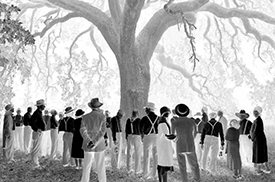 Ken Gonzales-Day, The Lynching of “Spanish Charlie,” Santa Rosa, CA (Inverted), 2016, C-print (artwork © Ken Gonzales-Day)
Ken Gonzales-Day, The Lynching of “Spanish Charlie,” Santa Rosa, CA (Inverted), 2016, C-print (artwork © Ken Gonzales-Day)
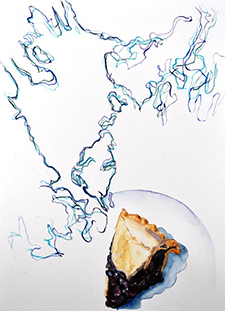 Lucinda Bliss, Borders Over Pie: Passamaquoddy Bay, 2016, graphite pencil and watercolor on paper, 14 x 10 in. (artwork © Lucinda Bliss)
Lucinda Bliss, Borders Over Pie: Passamaquoddy Bay, 2016, graphite pencil and watercolor on paper, 14 x 10 in. (artwork © Lucinda Bliss)